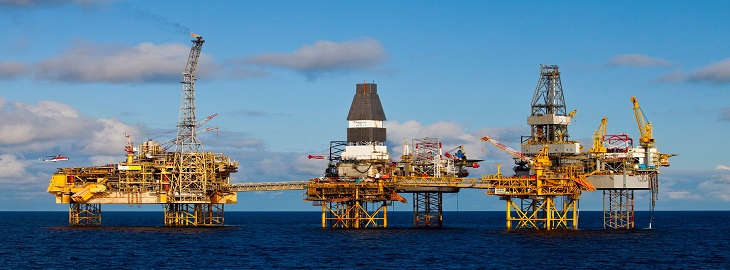GAS Equipment solutions

Gas equipment solutions cover a wide spectrum of tools, machines, and systems that are essential for the extraction, processing, storage, transportation, and utilization of natural gas. These solutions are designed to improve efficiency, safety, and sustainability in the energy sector. Below is a detailed breakdown of the various gas equipment solutions used throughout the industry:
1. Gas Extraction and Drilling Equipment (Upstream)
Drilling and Wellhead Equipment:
Drilling Rigs: These are used to drill wells to access natural gas reserves. Rigs come in various types, including onshore, offshore, and mobile rigs. Specialized offshore rigs include jack-up rigs, semi-submersible rigs, and floating rigs.
Blowout Preventers (BOPs): Safety equipment that prevents uncontrolled releases of natural gas during drilling by sealing the well if pressure exceeds safe limits.
Wellheads: Installed at the top of a gas well, wellheads control and monitor the flow of gas from the reservoir, providing pressure control and stabilizing the well.
Mud Pumps: Pumps that circulate drilling fluids (mud) to cool the drill bit, remove cuttings, and maintain pressure balance during drilling operations.
Casing and Tubing: Steel pipes inserted into wells to ensure structural integrity, isolate different underground zones, and facilitate the flow of gas.
2. Gas Processing Equipment
After extraction, natural gas often contains impurities that must be removed before it can be transported and used. Gas processing equipment includes:
Separation and Filtration Equipment:
Gas Separators: Used to separate gas, oil, and water from the wellstream. Three-phase separators separate gas, oil, and water, while two-phase separators separate gas and liquid.
Dehydrators: These remove moisture from natural gas to prevent the formation of hydrates, which can block pipelines. Desiccant dehydration and glycol dehydration are common methods.
Gas Scrubbers: Filters that remove particulate matter, oils, and other contaminants from the gas stream before it enters processing units.
Sweetening and Treatment:
Amine Gas Treaters: Amine-based systems that remove acidic gases like hydrogen sulfide (H2S) and carbon dioxide (CO2) from natural gas, making it “sweet” and ready for transport.
Mercury Removal Units: Special filters that remove trace amounts of mercury, which can damage downstream equipment and pipelines.
Cryogenic Processing:
Cryogenic Units: Used to separate valuable natural gas liquids (NGLs) such as propane, butane, and ethane by cooling the gas to extremely low temperatures. This process is essential for LNG production.
NGL Fractionation Units: Used to separate different natural gas liquids after the cryogenic separation.
3. Gas Compression Equipment
Gas compression is necessary for transporting natural gas across long distances through pipelines. Compressors increase the gas pressure to keep it flowing smoothly.
Back to Services
1. Gas Extraction and Drilling Equipment (Upstream)
Drilling and Wellhead Equipment:
Drilling Rigs: These are used to drill wells to access natural gas reserves. Rigs come in various types, including onshore, offshore, and mobile rigs. Specialized offshore rigs include jack-up rigs, semi-submersible rigs, and floating rigs.
Blowout Preventers (BOPs): Safety equipment that prevents uncontrolled releases of natural gas during drilling by sealing the well if pressure exceeds safe limits.
Wellheads: Installed at the top of a gas well, wellheads control and monitor the flow of gas from the reservoir, providing pressure control and stabilizing the well.
Mud Pumps: Pumps that circulate drilling fluids (mud) to cool the drill bit, remove cuttings, and maintain pressure balance during drilling operations.
Casing and Tubing: Steel pipes inserted into wells to ensure structural integrity, isolate different underground zones, and facilitate the flow of gas.
2. Gas Processing Equipment
After extraction, natural gas often contains impurities that must be removed before it can be transported and used. Gas processing equipment includes:
Separation and Filtration Equipment:
Gas Separators: Used to separate gas, oil, and water from the wellstream. Three-phase separators separate gas, oil, and water, while two-phase separators separate gas and liquid.
Dehydrators: These remove moisture from natural gas to prevent the formation of hydrates, which can block pipelines. Desiccant dehydration and glycol dehydration are common methods.
Gas Scrubbers: Filters that remove particulate matter, oils, and other contaminants from the gas stream before it enters processing units.
Sweetening and Treatment:
Amine Gas Treaters: Amine-based systems that remove acidic gases like hydrogen sulfide (H2S) and carbon dioxide (CO2) from natural gas, making it “sweet” and ready for transport.
Mercury Removal Units: Special filters that remove trace amounts of mercury, which can damage downstream equipment and pipelines.
Cryogenic Processing:
Cryogenic Units: Used to separate valuable natural gas liquids (NGLs) such as propane, butane, and ethane by cooling the gas to extremely low temperatures. This process is essential for LNG production.
NGL Fractionation Units: Used to separate different natural gas liquids after the cryogenic separation.
3. Gas Compression Equipment
Gas compression is necessary for transporting natural gas across long distances through pipelines. Compressors increase the gas pressure to keep it flowing smoothly.